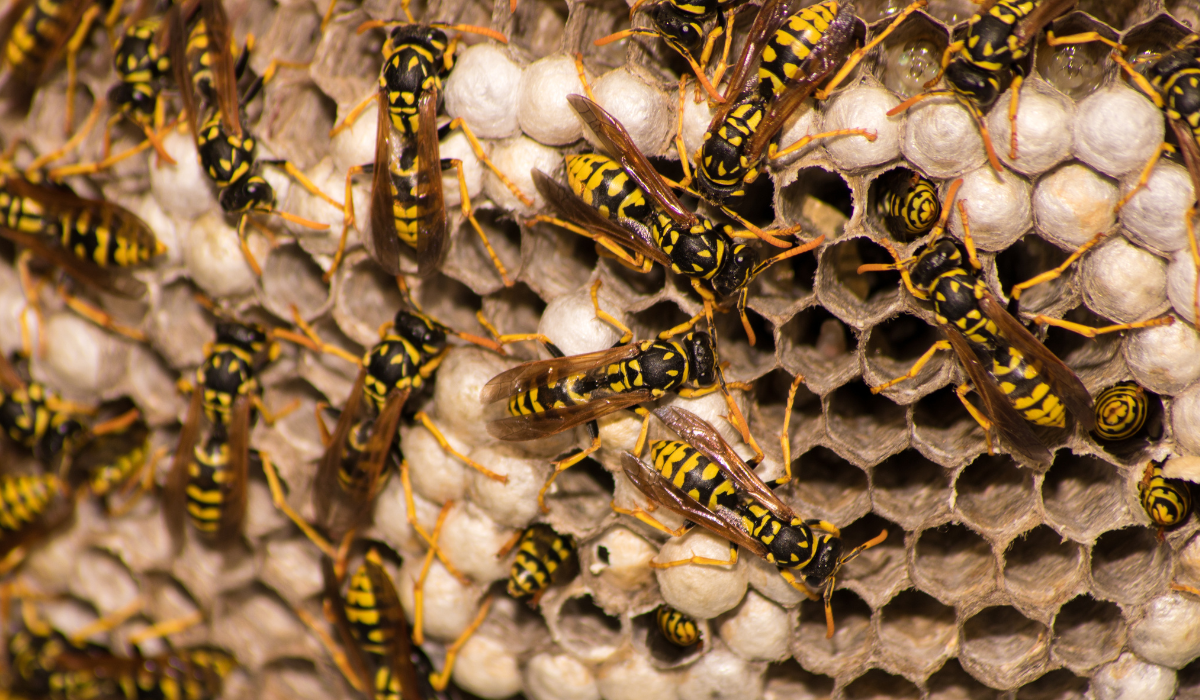Can I Sleep with a Wasp in my Room

If you’ve ever found a wasp in your bedroom, you may have wondered if it’s safe to sleep in the same room. Wasps can be aggressive and their stings are painful, so it’s natural to be concerned about your safety. In this article, we’ll explore whether it’s safe to sleep with a wasp in your room and what precautions you can take to avoid getting stung.
Why Do Wasps Enter Houses?
Wasps are attracted to homes for several reasons. They may be seeking shelter from the elements or looking for food sources. Wasps are attracted to sweet smells, so if you have open containers of food or drinks in your room, this can attract them. Additionally, wasps may be drawn to the light coming from your room, especially if it’s a warm and inviting glow.
Are Wasps Dangerous?
While wasps can be aggressive, they generally won’t attack humans unless they feel threatened. However, if you accidentally disturb a wasp nest or swat at a wasp, it may sting you. Wasps are known for their painful stings, which can be dangerous for people who are allergic. In rare cases, a wasp sting can even be fatal.
What to Do if You Find a Wasp in Your Room
If you find a wasp in your room, the first thing you should do is remain calm. Don’t swat at the wasp or make sudden movements, as this can provoke it. Instead, slowly and quietly move away from the wasp and try to close off the room. You can do this by shutting the door or windows and placing a towel or cloth at the base of the door to prevent the wasp from escaping.
How to Keep Wasps Out of Your Room
The best way to avoid encountering a wasp in your room is to take steps to keep them out in the first place. Here are some tips for preventing wasps from entering your home:
• Keep windows and doors closed as much as possible.
• Use screens on windows and doors to keep wasps out.
• Seal cracks and crevices in walls and windows where wasps can enter.
• Keep food and drinks in sealed containers and clean up spills promptly.
• Remove garbage and compost regularly, as this can attract wasps.
How to Deal with a Wasp Sting
If you are stung by a wasp, the first thing you should do is remove the stinger if it’s still in your skin. You can do this by gently scraping it out with a fingernail or credit card. Next, clean the area with soap and water and apply a cold compress to reduce swelling. Over-the-counter pain relievers can also help to alleviate pain.
How to Treat an Allergic Reaction to a Wasp Sting
Wasp stings can be painful, but for some people, they can also trigger a severe allergic reaction known as anaphylaxis. Anaphylaxis is a serious and potentially life-threatening condition that requires immediate medical attention. In this section, we’ll discuss what to do if you or someone else experiences an allergic reaction to a wasp sting.
Recognizing an Allergic Reaction
Not everyone who gets stung by a wasp will experience an allergic reaction, but for those who do, the symptoms can be severe. Signs of an allergic reaction to a wasp sting may include:
• Hives or rash
• Swelling of the face, lips, or throat
• Difficulty breathing or swallowing
• Nausea or vomiting
• Rapid heartbeat
• Dizziness or fainting
Treating an Allergic Reaction
If you or someone else experiences an allergic reaction to a wasp sting, call 911 or go to the nearest emergency room right away. While waiting for medical help, you can take some steps to help manage the symptoms:
• If the person is having trouble breathing, have them sit up and lean forward to help make breathing easier.
• If the person has an epinephrine auto-injector (such as an EpiPen), use it immediately according to the instructions.
• Loosen any tight clothing and cover the person with a blanket if they feel cold.
• Monitor the person’s breathing and heart rate until medical help arrives.
Prevention
The best way to prevent an allergic reaction to a wasp sting is to avoid getting stung in the first place. If you know you are allergic to wasp venom, talk to your doctor about carrying an epinephrine auto-injector with you at all times. Other tips for avoiding wasp stings include:
• Wear shoes, long pants, and long sleeves when outdoors.
• Avoid wearing perfumes or scented lotions, which can attract wasps.
• Be cautious around outdoor food and drinks, which can also attract wasps.
• Keep windows and doors closed or screened to prevent wasps from entering your home..
Conclusion
An allergic reaction to a wasp sting can be a frightening experience, but with prompt medical attention and the right treatment, most people make a full recovery. If you or someone you know experiences an allergic reaction to a wasp sting, seek medical attention immediately. And remember, the best way to prevent an allergic reaction is to avoid getting stung in the first place.
RECENT ARTICLES
